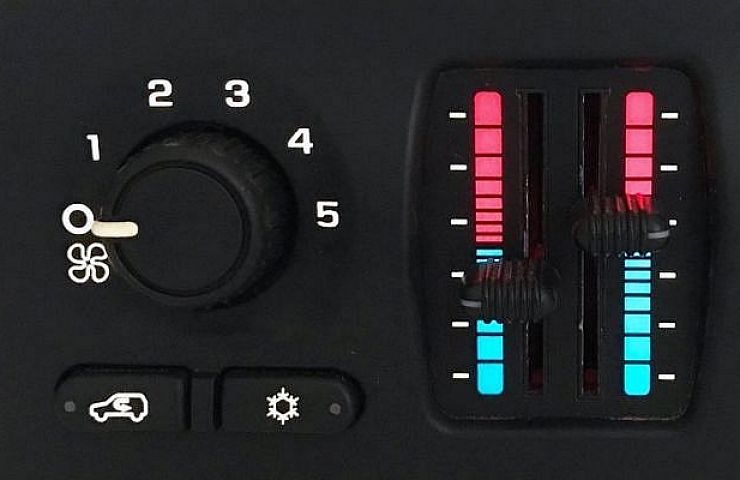Contents
For most of the year, when the weather is warm, the last thing you think about is your car’s heater. But now that winter has arrived, it’s a must to ensure your heater is ready for the frigid nights ahead.
Keep this in mind: A car’s heater is essential to your car’s cooling system. The heater relies on hot water from the radiator to provide heat to the passenger cabin. Therefore, if your car’s heater is not working correctly, there might be an issue with the cooling system. Here are a few things to check.
If Your Car Heater Is Not Working, Check the Coolant
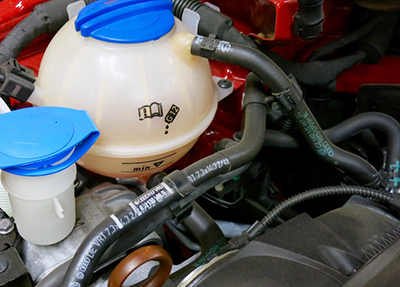
A quick check of your car’s coolant tank will tell you if the levels are good.
For your car’s heating system to work as designed, the radiator needs the proper coolant level. Insufficient coolant can cause problems, including:
- Air pockets in the heater core
- Incorrect temperature gauge readings
- Poor engine performance
- Overheating
The quickest way to make sure coolant is at the right level is to check the overflow tank when the car is cool. The side of the tank displays low- and high-level marks.
Read this: Regularly Check These Four Car Fluids
Next, run the heater at its warmest setting for a few minutes to eliminate air pockets that might have formed in the heater core during the off-season.
If you can’t remember when you last replaced the coolant, check the fluid for rust or debris. Healthy engine coolant is usually brightly colored, often green or orange. If it becomes brown or a rust color, it’s time to flush the cooling system.
You can also check the mixture of water and antifreeze by using an antifreeze tester. This inexpensive device uses a sample to indicate the strength of the coolant-water mix.
Where Did the Coolant Go?
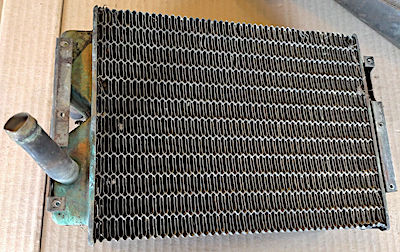
Heater core
If you need to add coolant, it’s a good idea to check the cooling system for leaks. If you suspect a leak, monitor the overflow tank level closely for a few days to see if the level remains constant. Leaks come in all shapes and sizes, and it’s essential to take care of them sooner rather than later.
Check hose connections and the radiator cap for signs of leakage. Automobile coolant has a distinctly sweet smell—so see if you can pick up a whiff to track down the source of the leak. Of course, a pool of coolant on the garage floor is a sure sign of trouble.
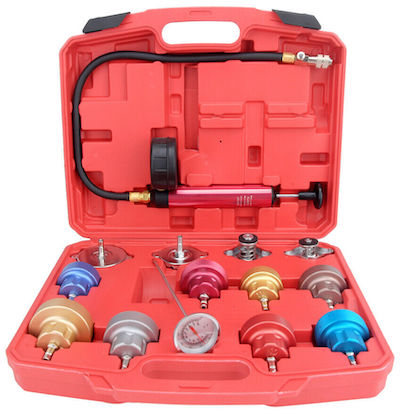
A radiator pressure testing kit helps track down pesky leaks.
More severe leaks could be the result of a damaged head gasket, a cracked intake, a leaking heater core, or a broken radiator. Leaks need to be fixed immediately.
We also suggest using a radiator pressure tester. When the coolant is cold, remove the radiator cap and affix the testing cap—which includes a bicycle-like pump—to the radiator. Pump up the system and monitor the gauge to see if it loses pressure. Then check all the hoses and fittings for a leak.
If a leak leaves you stumped, consult a professional mechanic sooner than later.
Is Coolant Getting to the Car’s Heater Core? Is It Hot?
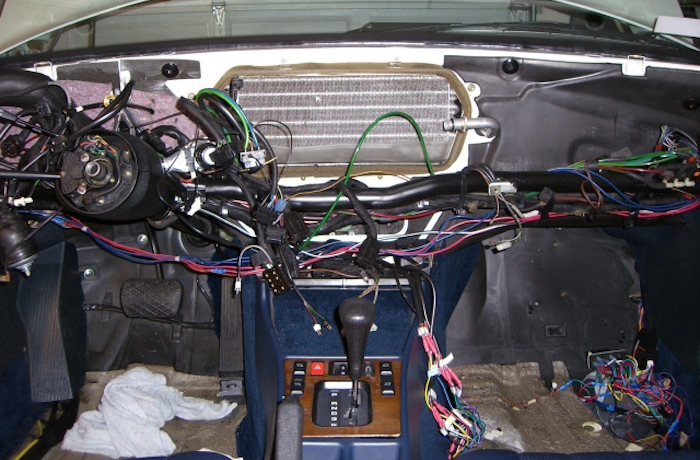
Replacing a heater core can require disassembly of the dash.
Coolant must circulate through the car’s heater core to warm the interior. But sometimes that coolant never gets hot enough to make a difference. Check the radiator temperature gauge (if equipped). It should read at least 210 degrees after the car warms up.

Car heater not working? Check the heater valve.
Here’s another way to check:
- Start your car.
- While the car is still cold, squeeze the upper radiator hose.
- If you feel coolant circulating through, the thermostat is probably stuck in the open position. In that case, the coolant will not get hot enough, so you should replace the thermostat.
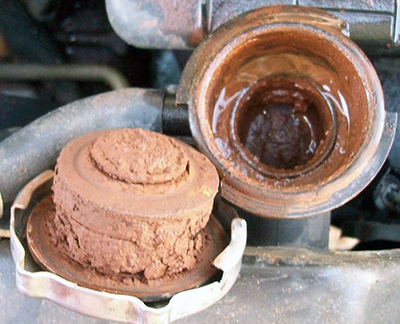
Lack of regular cooling system maintenance can clog your radiator and heater core.
The heater core connects to the main coolant system with smaller hoses and a valve controlled by either a mechanical cable or a vacuum hose. The valve controls how much heat enters the system. Check to ensure that the smaller hoses are not pinched and that the valve can open and close.
In some cars, the heater valve may be in the engine compartment. But in most modern vehicles, it is in the HVAC unit in the car’s interior. As a result, you might need a professional mechanic to access the heater valve properly.
We hope these tips help you stay warm and toasty on the road this winter.

